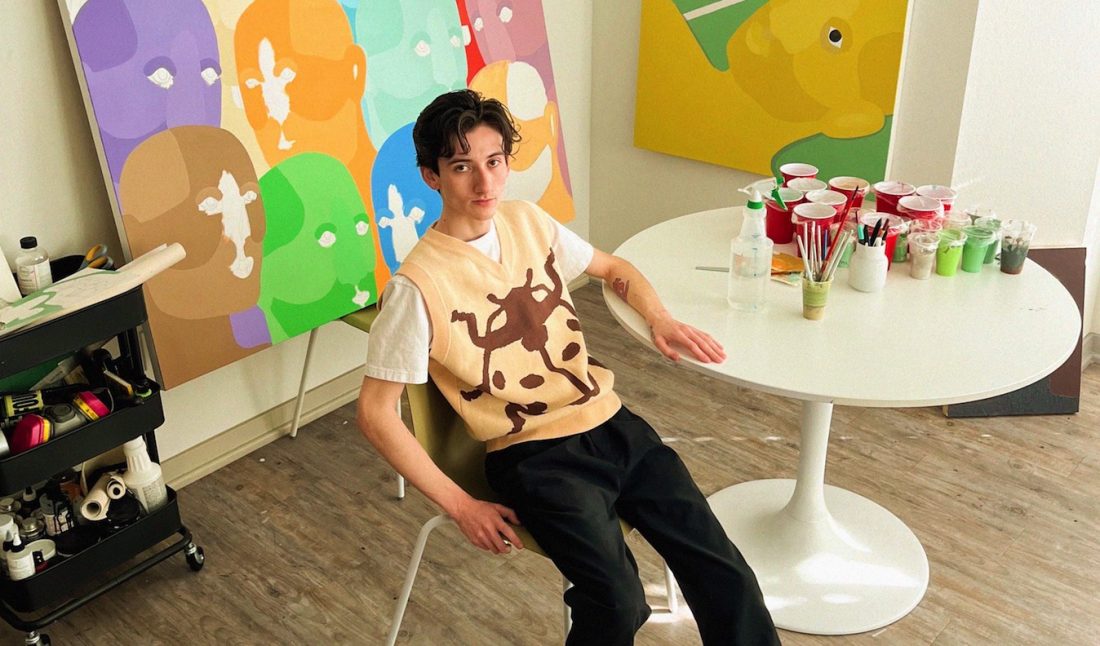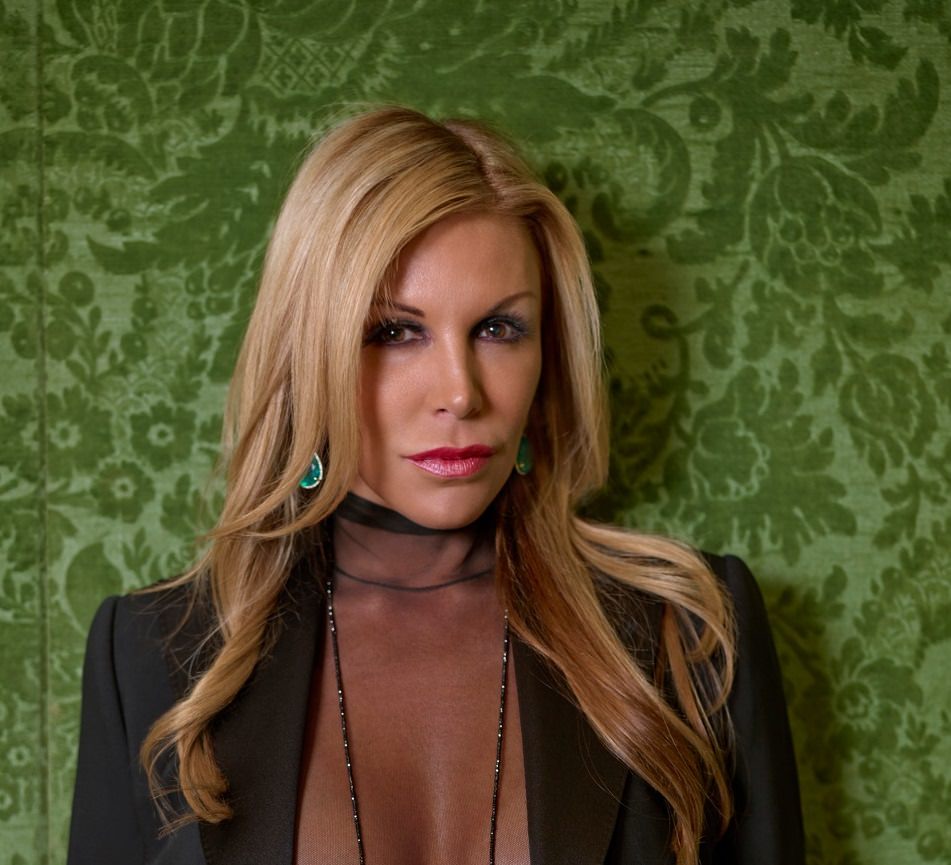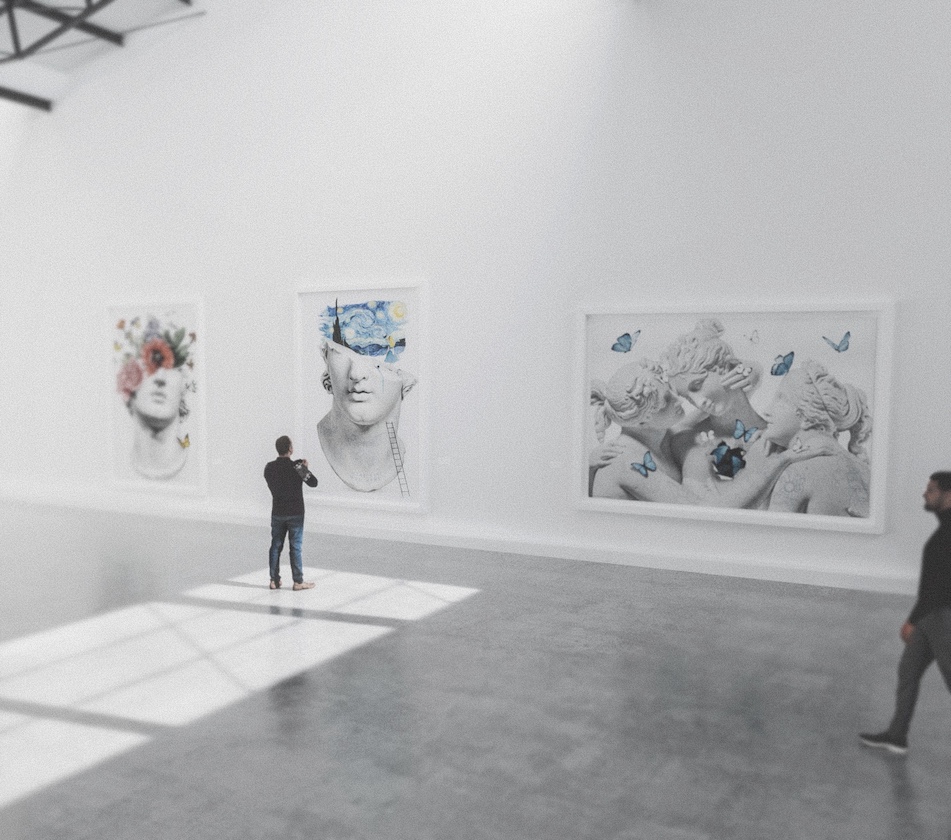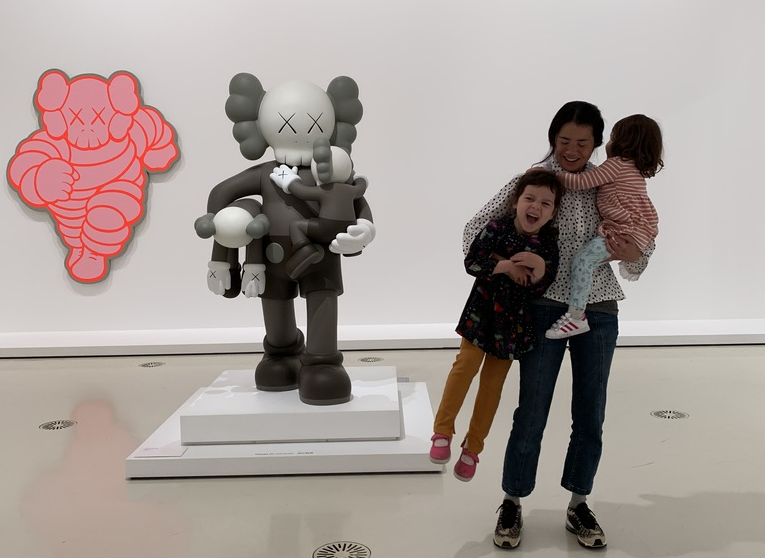Three years ago, I found myself in Scottsdale, Arizona for the first time. Nestled between rugged mountains in an expansive desert landscape were artistic creations of all shapes and sizes—from land art projects and public installations to interactive digital works found within the Scottsdale Museum of Contemporary Art.
At a multi-purpose space named Palabra, too, I found artworks by an artist named Austin M. Sanchez that made me stop mid-step. Included in the space—which hosts a coffee shop, a hair salon, and an exhibition room—was Sanchez’s show entitled “Year One,” featuring paintings of subjects that overlapped in bright pops of color. One unforgettable painting in specific—two figures, respectively in blue and yellow, that merged in the middle like a Venn diagram in grey—was the reason I pursued Sanchez for this article.
For that show, he wrote in an artist statement: “At 21 years, I feel the need to reflect more than ever, attempting to figure out what I want out of life, all while adolescence [is] feeling like it’s fading day by day but adulthood [has] not fully arrived. ‘Year One’ is a representation of these times and the self-reflection that takes place during the transition from adolescence to adulthood—where relationships, past interactions, goals, and aspirations come together to form who you are in the present and future.”
Today, the 24-year-old Missouri-born, Arizona-based painter is revealing to Whitewall what his journey into the art world has been like, how his personal relationship with mental health and dissociation has impacted his works, and what he has planned for the remainder of 2022.
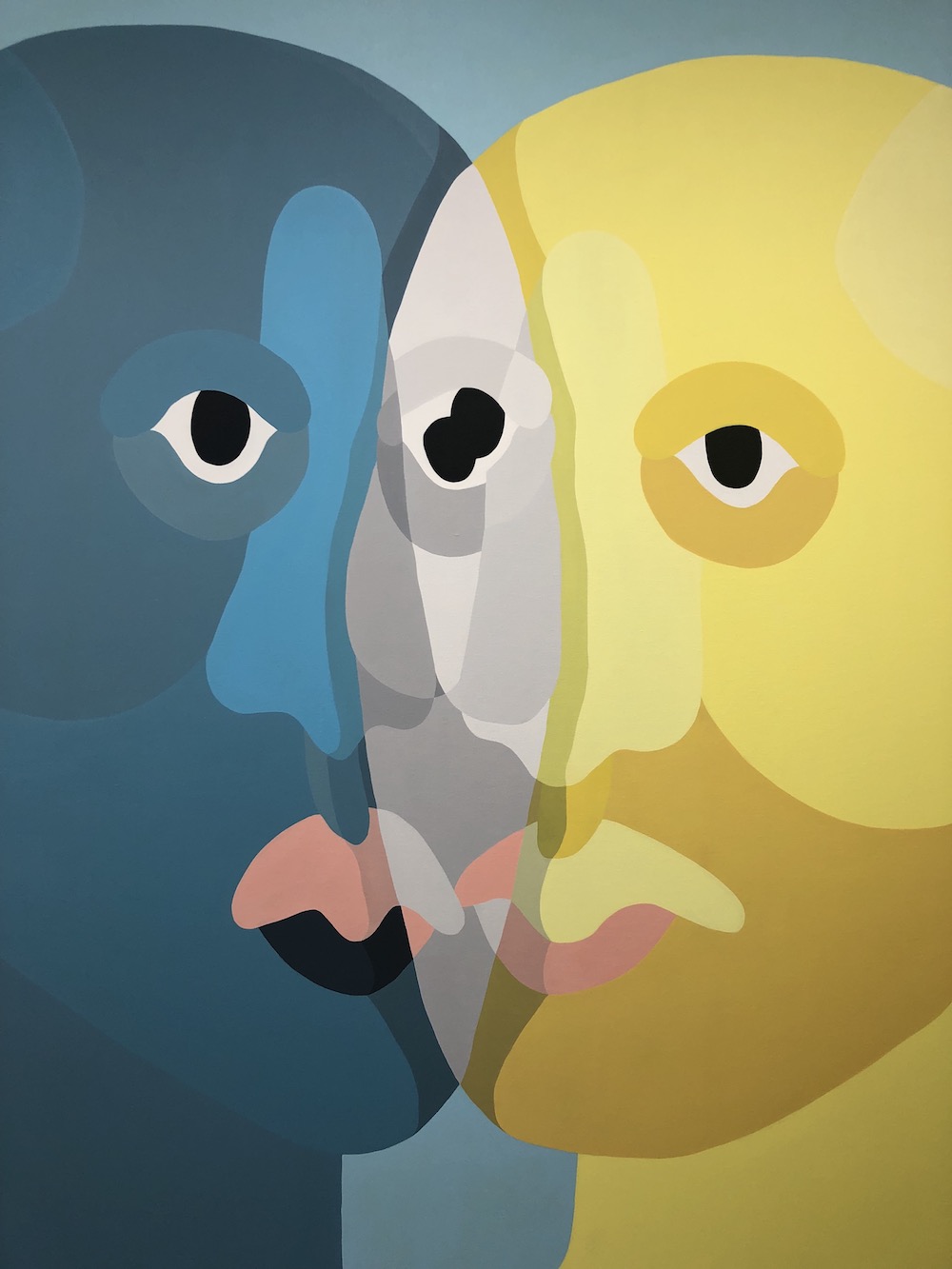 Photo by Eliza Jordan, courtesy of Austin M. Sanchez.
Photo by Eliza Jordan, courtesy of Austin M. Sanchez.
WHITEWALL: You mentioned you started painting in high school and dropped out to focus solely on art. Does that mean you’re self-taught?
AUSTIN M. SANCHEZ: I never thought I was a good enough student to be able to pursue a formal education when it comes to art, so far everything I’ve learned has been self-taught. After leaving school I started working for my family’s carpet cleaning business to be able to afford the art career I wanted to have. To this day, I still help with some jobs here and there when I can, especially if I’m working on bigger projects that need funding.
WW: Did your friends or family influence your interest in pursuing art?
AMS: My dad has always been an artist. Originally he went to college for graphic design, and growing up, he’d paint these weird abstract graphics on paper and sometimes canvas. As kids, me and my siblings loved them. We’d always look through his old binders he had full of drawings he’d made. And my mom was also really into redecorating and painting the house constantly. The combination of the way my mom looked at color and the way my dad would make graphics were the first real seeds of creativity that made me realize I wanted to be in this field.
I’d tell my family I wanted to be an architect because I loved building with Legos so much, and I really wanted to pursue it until I realized I needed to go to school to be a traditional architect. After that, it was trying to emulate the art style of the comic books I read when I was in middle school. Then, once I was into drawing, I wanted to be a tattoo artist. In high school, some friends and I started a clothing brand using my drawings as the base for the design style, which got me into graphic design, but that eventually ended. After years of struggling to find a way to express that artistic desire, I got into painting when I was about 16. Since then, that’s been my main focus. I’ve been lucky enough to actually be able to pursue it and have enough eyes on my work to be able to show it in public.
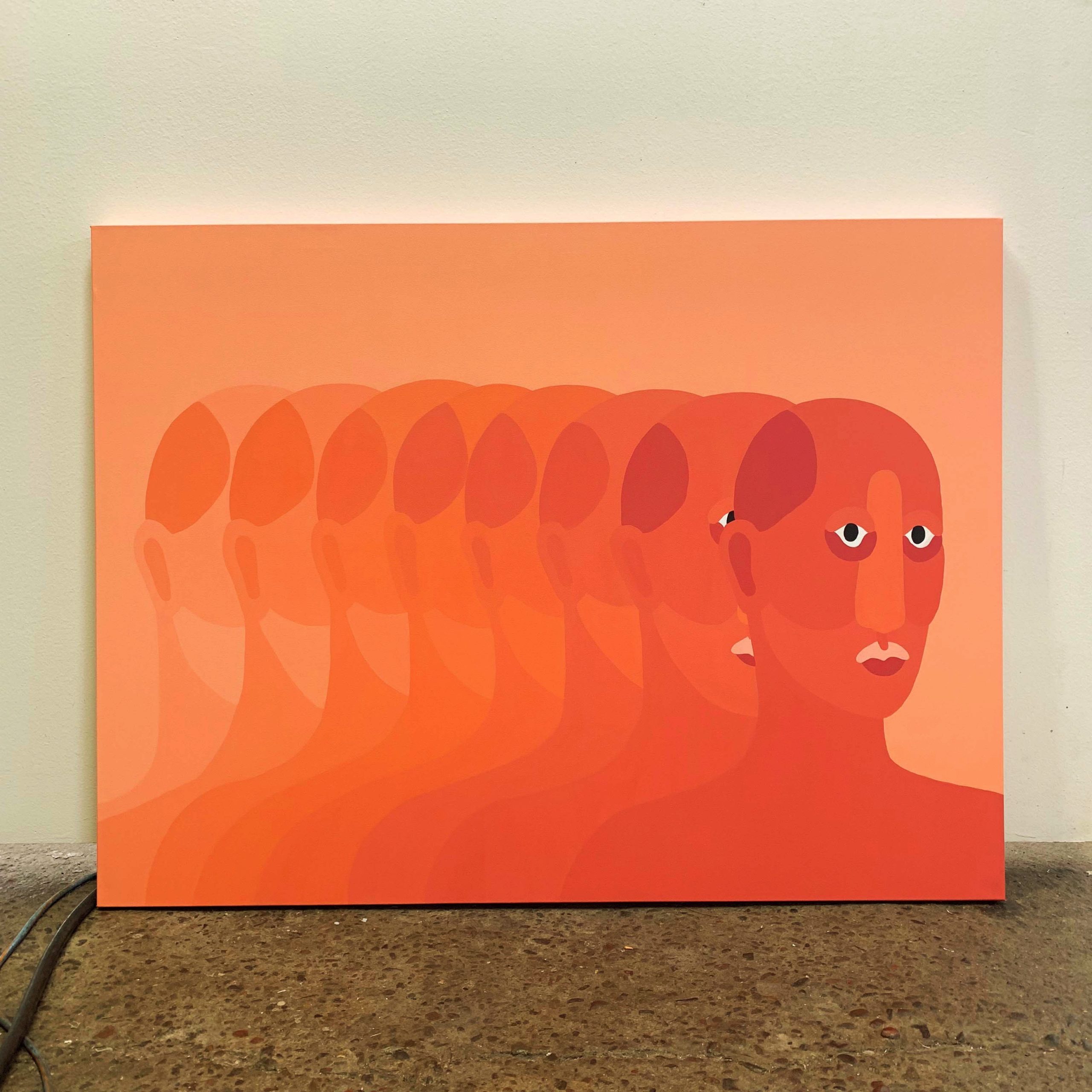 Long Term, 2019, courtesy of Austin M. Sanchez.
Long Term, 2019, courtesy of Austin M. Sanchez.
WW: What was your first painting?
AMS: I have a really detailed history of all of my art. My parents keep everything, so I can trace back my steps from when I was a kid all the way up until now. As far as my current work, I still have the very first painting I made that started off the style I have now. I remember wanting to have my own look and feel to the paintings I made. It felt like it was impossible to do, but as I experimented with painting, I stumbled upon a style that made sense to me.
The first painting was made with house paint and acrylic, and slightly resembles what my art looks like today. Most of the early work didn’t sell at all so I still have almost all of it at my parent’s house—the good and the bad.
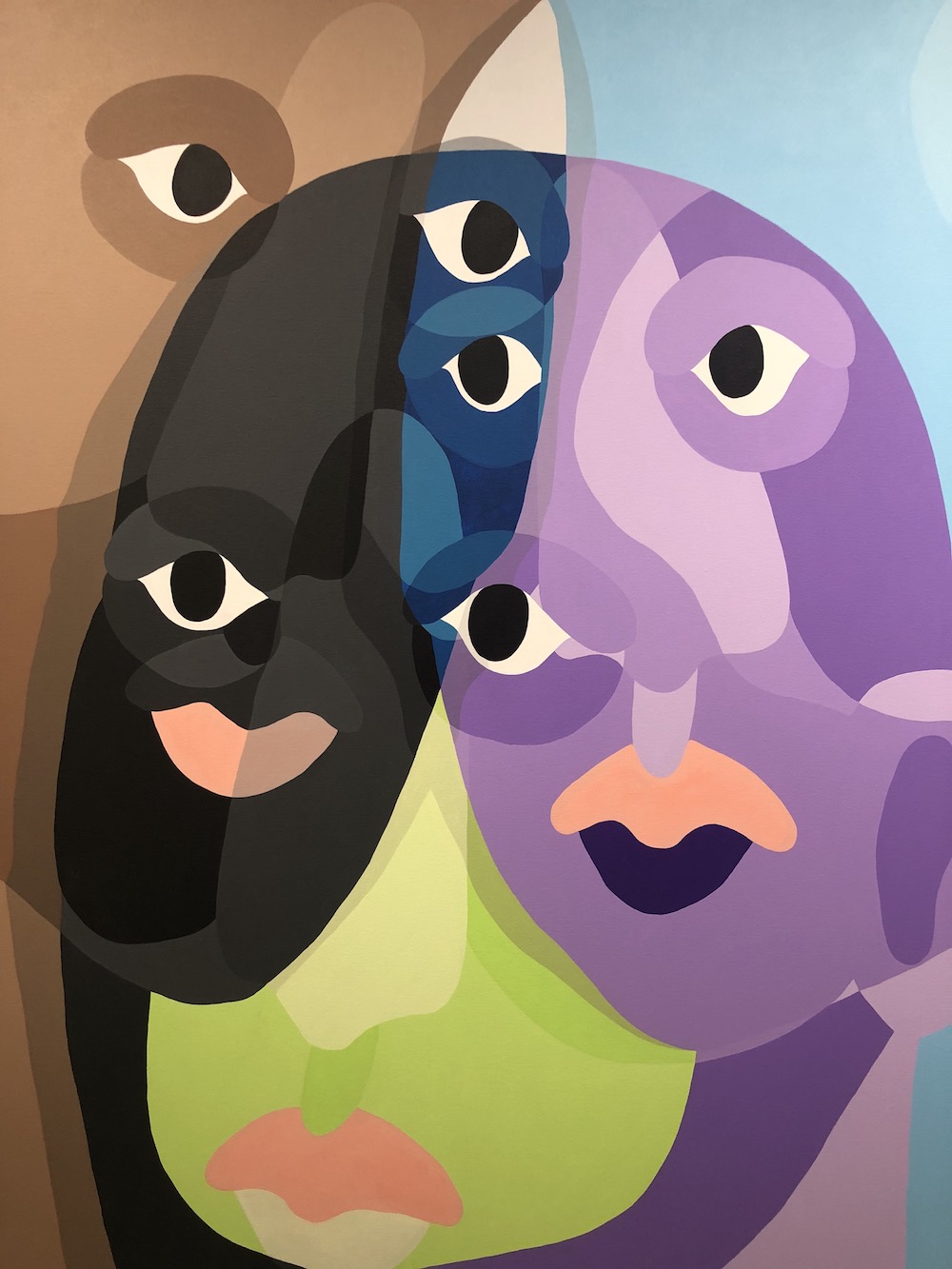 Photo by Eliza Jordan, courtesy of Austin M. Sanchez.
Photo by Eliza Jordan, courtesy of Austin M. Sanchez.
WW: How would you describe your aesthetic?
AMS: Still and colorful. I don’t think my art is fully realized yet though. I want to get to a point where the paintings are more emotional—where you can look at them and feel them just based off of the colors I use and the staging of the figures. I know what I don’t want them to be and so far I’ve been able to eliminate those problems from the painting process. I don’t ever want anything to feel goofy or character-like.
Whenever I talk about the subjects in the paintings I try to use the word “figure” rather than “human,” “guy,” “girl,” or “character.” I want it to be general to the point where anyone can relate, but emotional enough to feel like the viewer can pinpoint a time where they’ve felt the same way I did when I made it. I credit a lot of that aesthetic to artists like Ellsworth Kelly, Alberto Giacometti, and James Turrell.
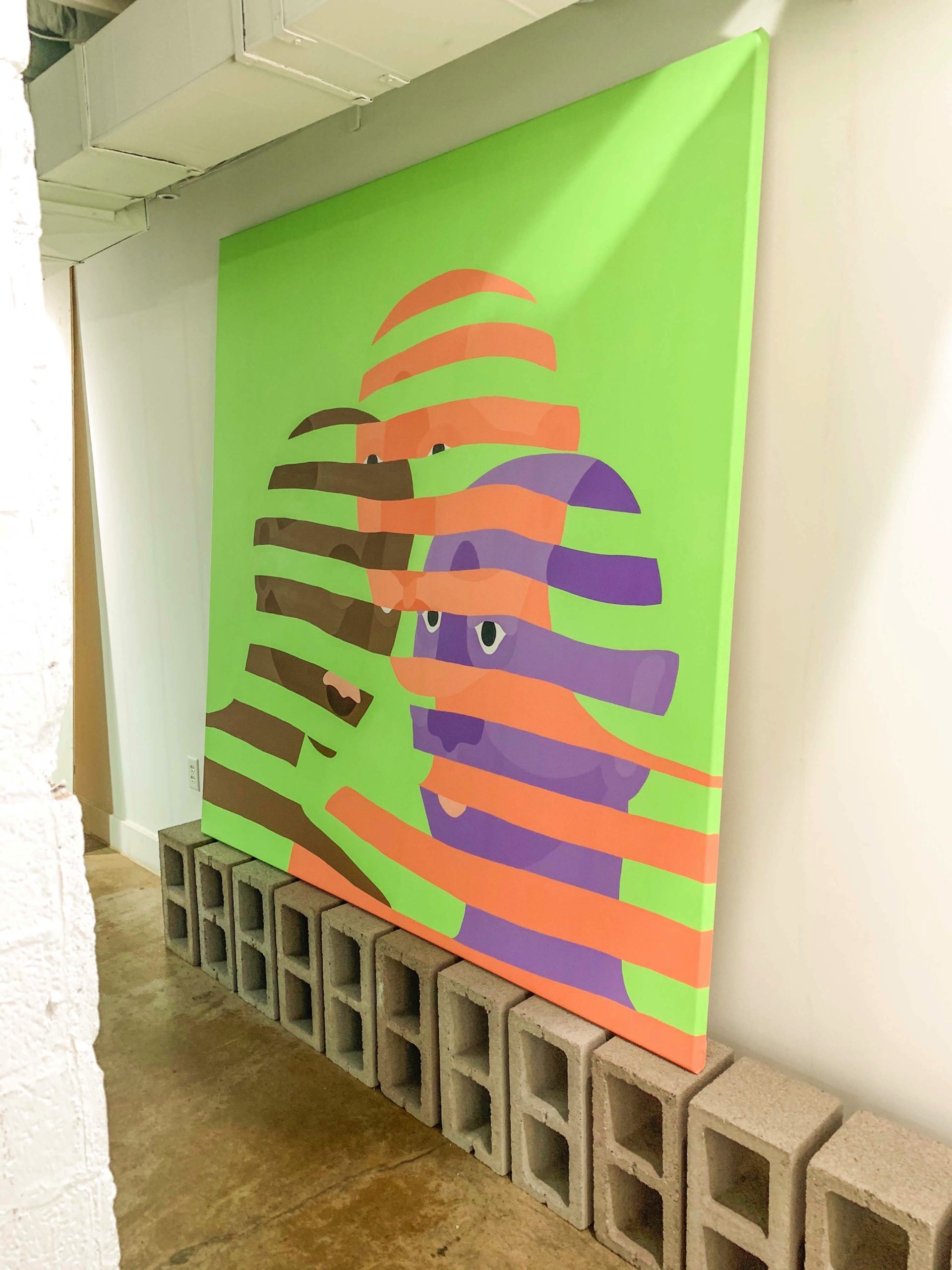 Courtesy of Austin M. Sanchez.
Courtesy of Austin M. Sanchez.
WW: Where do the ideas for your works come from?
AMS: In 2019, I moved to New York City for a few months and got really obsessed with Bob Dylan. I listened to a lot of his interviews and I really like the way he described writing some of his best music.
He said, “All those early songs were almost magically written. Darkness at the break of
noon, shadows even the silver spoon, a handmade blade, the child’s balloon… Well, try to sit down and write something like that. There’s a magic to that, and it’s not Siegfried and Roy kind of magic, you know? It’s a different kind of penetrating magic.”
I think it’s insane for anyone to compare themselves artistically to Bob Dylan, but it made a lot of sense to me. A lot of what I consider my best paintings have always just appeared in my head with no foresight. They come from emotions I’m feeling at the time or things I’m going through, but I don’t really realize it until after they’re finished. Everything starts out subconsciously, and if I try to force it, it doesn’t turn out the same. Most of the paintings end when I figure out what that feeling is or what it’s about after I’m finished. The naming process at the end really helps bring it all together for me. I can look back on them and remember exactly what I was going through.
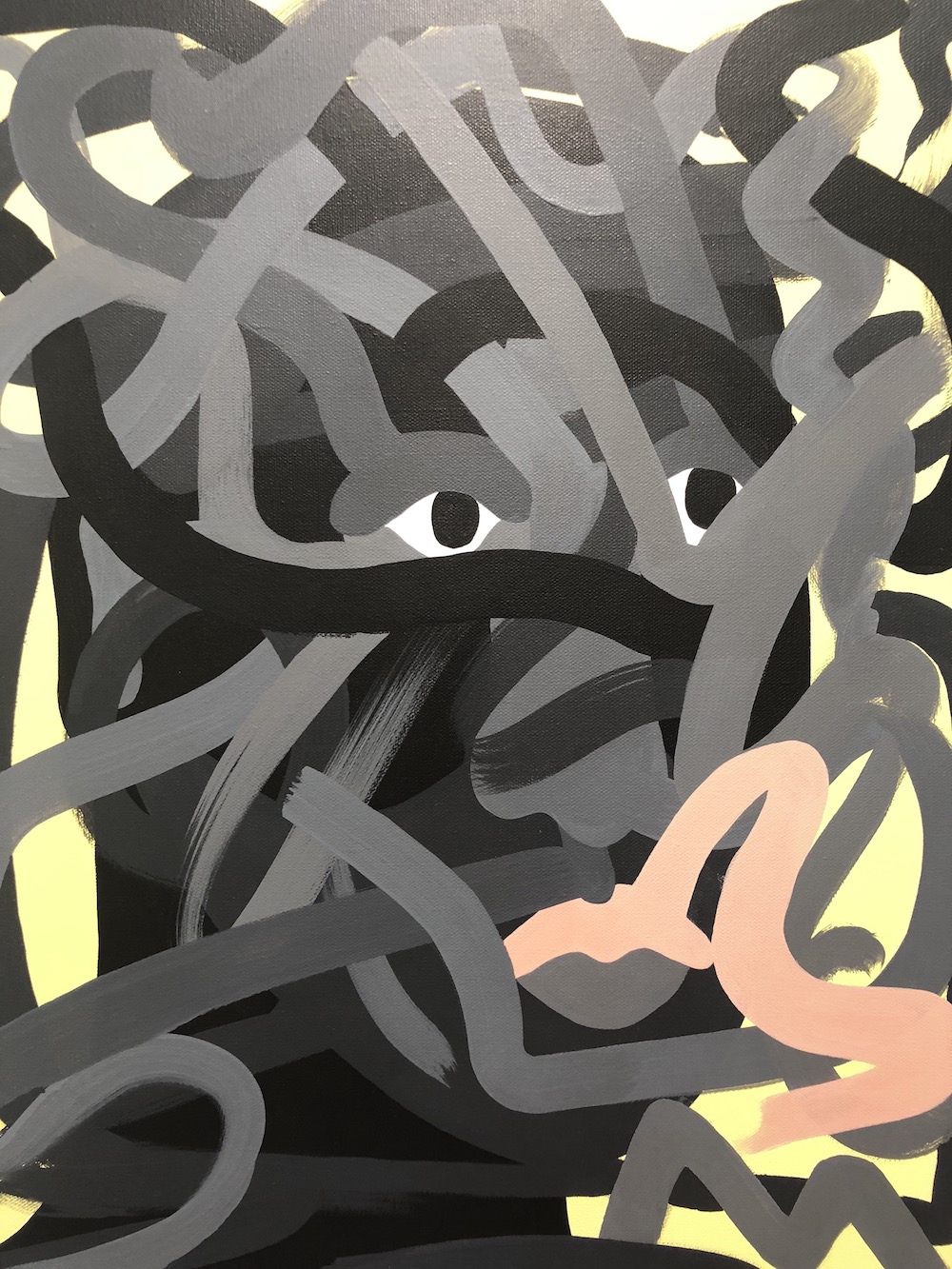 Photo by Eliza Jordan, courtesy of Austin M. Sanchez.
Photo by Eliza Jordan, courtesy of Austin M. Sanchez.
WW: How did the pandemic impact your creativity? Your view of your work?
AMS: I’m still trying to figure out how it has impacted my creativity. In the beginning, it felt good to be home and not have any outside obligations. I was able to solely focus on art every day. As it went on, it became a bit depressing with no new stimulation or inspiration coming in. In my eyes, the themes in my work started to make more sense to me though.
The feeling of social anxiety and isolation that were going on globally are emotions I’ve always personally felt. Since I was a kid, I’ve struggled with social anxiety and the figures in my work started to make sense in terms of how I’ve always felt interacting with the world. When you’re anxious around people, it makes you feel like an outsider. And during the pandemic, everyone was weary of interacting with strangers. Everyone’s paranoia of conversation or conflict, in a weird selfish way, made me feel better that I wasn’t the only one that felt that way. Since the pandemic, my social anxiety and the global anxiety have gotten better, but I think the figures in my work still do represent that feeling of dissociation that I’ve felt and everyone else seemed to feel during that time period.
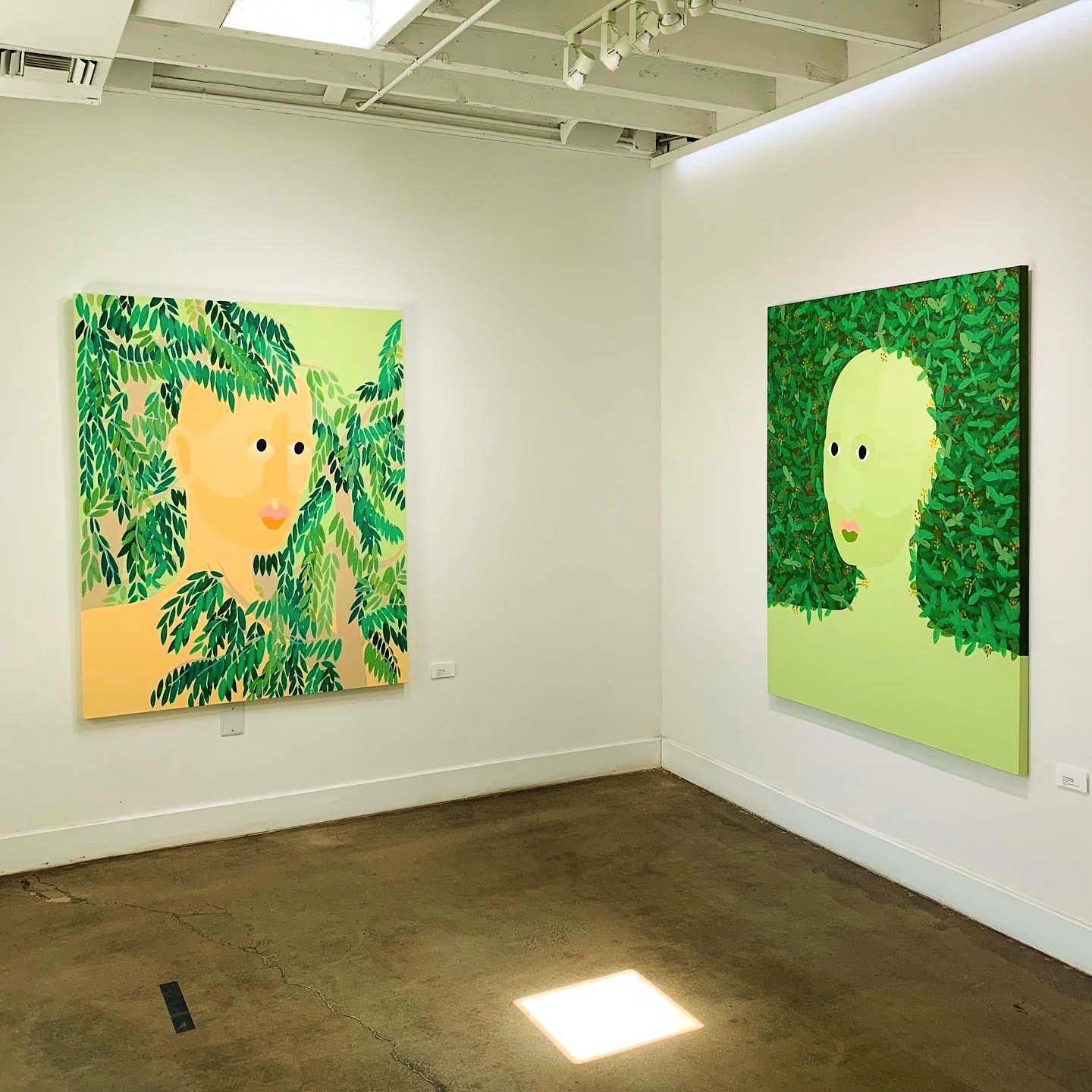 Courtesy of Austin M. Sanchez.
Courtesy of Austin M. Sanchez.
WW: Can you elaborate a bit on the subjects in your work, and describe what they represent?
AMS: The figures in the work really came from a place of weakness. I’ve always loved to draw, but the human face was so hard for me when I was young, so I had to develop a way to simplify it if I wanted to keep going with the subject. To me, there’s a huge sense of longing and loneliness in the figures. I grew up as a really shy, quiet, and anxious kid, so there was nothing more interesting to me than human behavior.
That social anxiety really stunts the way you look at yourself when you’re out in the world interacting with other people. When you see the way people express their personalities, you tend to analyze every small gesture and question it deeply. Analyzing people’s behavior isn’t necessarily a bad thing, but when you’re too anxious to interact with them and see where they’re coming from, it turns into more of a “people watching” exercise. I believe that’s where the figures in my work manifested from—a place of loneliness and the only method of interacting with the world is by watching others.
a lot of new subjects have been introduced over the past four years specifically. I make most of the paintings based on the life experiences I’ve gone through. I remember my work evolving the most around 2018. During that year I went through the breakup of a long-term relationship and it really changed the way I made art. It started to come from a place of emotion rather than just aesthetics; it changed the way I look at the paintings and the process.
From then on, I’ve tried to treat every painting as a chapter of an autobiography. The subjects went from purely color and shape to deeper, emotionally connected screenshots of my life. The last solo show I did, I was able to tell a story about my own family history of labor. To be able to open up like that and be very personal with people is an accomplishment for me and I hope that I’m able to grow and keep introducing those new subjects.
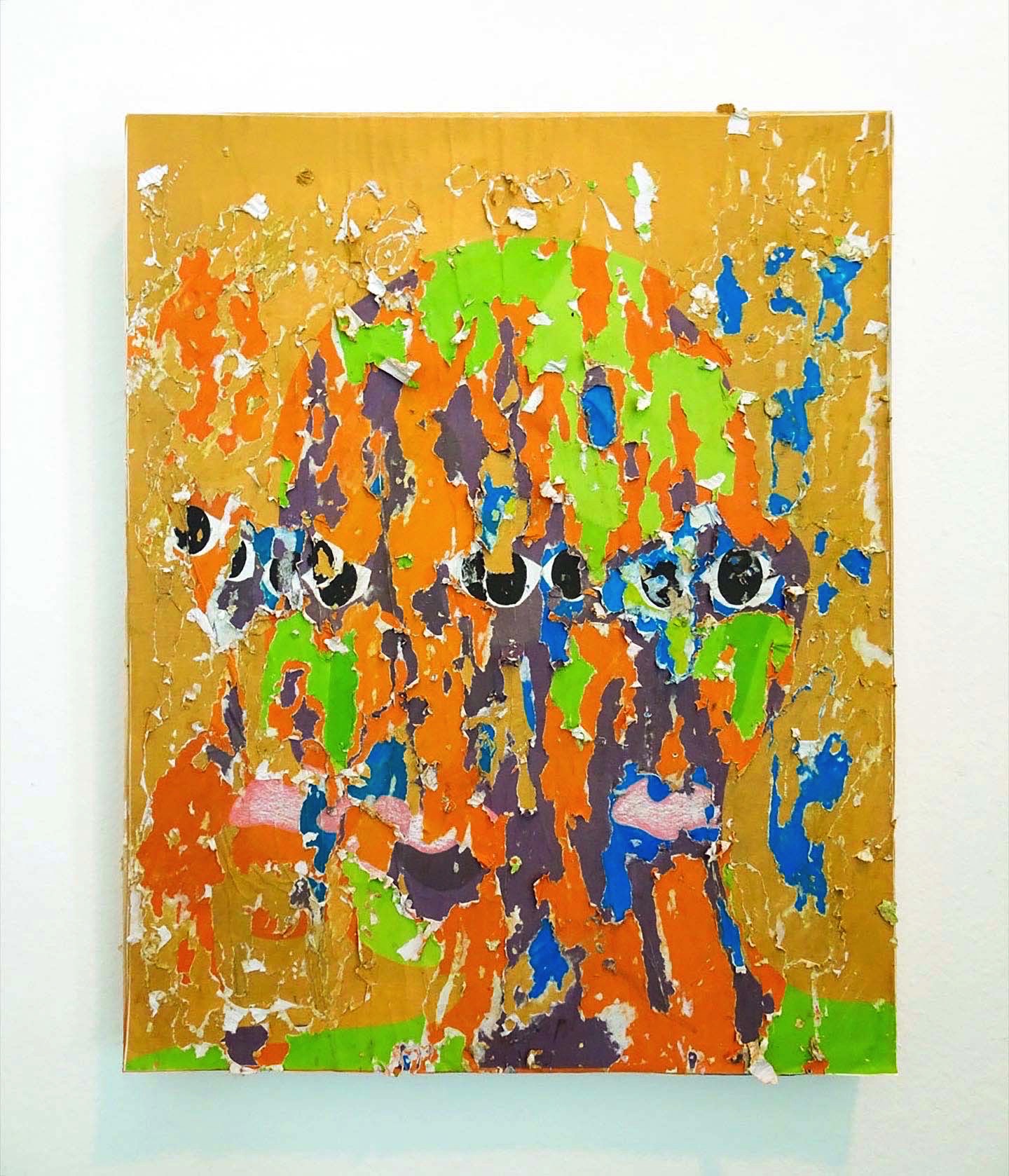 Courtesy of Austin M. Sanchez.
Courtesy of Austin M. Sanchez.
WW: Is there a medium you haven’t yet worked with but want to?
AMS: I really want to expand into a lot of different mediums. So far, all of my work has been made from the perspective of a painter but I don’t want to limit myself just to painting forever. I recently started a project called Year One to get out some of the ideas I have for products based on the art/figures in my work. I have a hard time getting into new mediums, but I want to be able to use Year One to branch out into sculpting, printmaking, graphic design, photography, etc.
WW: Who are some of your artistic inspirations?
AMS: Two of my biggest inspirations are two friends that I’ve been working with since the beginning. My friend Armando that runs the brand Neighbors and another friend Anthony that runs the brand War Bugs Me. I’ve seen the struggles we’ve all been through just to get a small amount of eyes on us and the work we’ve put in over the years, so my admiration for them will always be there.
Besides them, I gravitate to artists when I admire their work and their image—like Alberto Giacometti, Ellsworth Kelly, Kanye West, Bob Dylan, Ines Longevial, Virgil Abloh, Tyler the Creator, FKA Twigs, Wes Anderson, and Frank Ocean. They all have been able to build a strong body of work and intertwine their image into it to the point where everything becomes an act of art. I love when art defies mediums and becomes the point of life. Personality is channeled through expression, and to let that bleed into every facet of your life, to me, is the highest form of freedom and creativity.
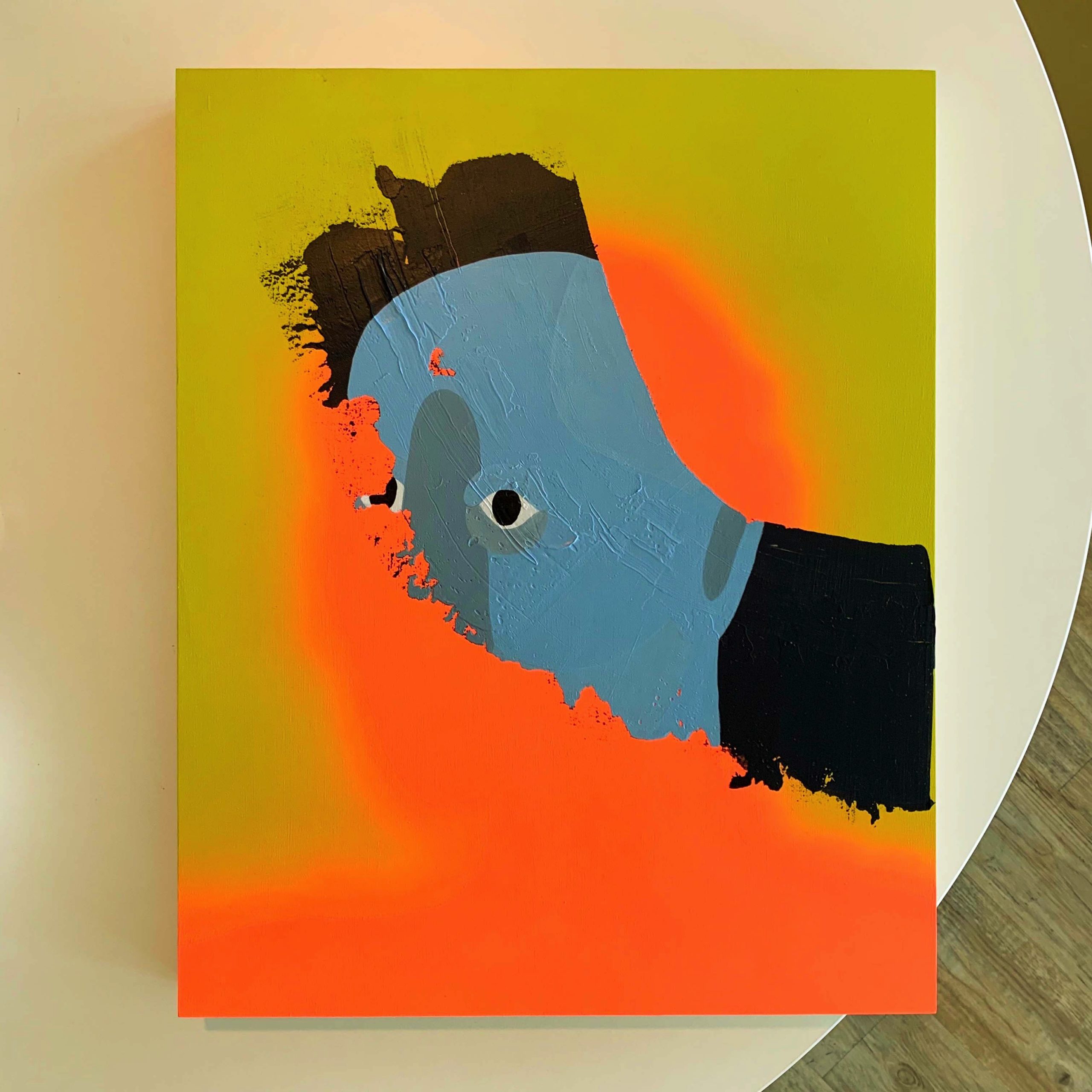 Courtesy of Austin M. Sanchez.
Courtesy of Austin M. Sanchez.
WW: What are you working on right now?
AMS: I’m working on a lot of commissioned work right now. Over the past year-and-a-half, I’ve been mostly focused on commissioned paintings and I’ve gained a few collectors that really love the work. This year, I want to get back to focusing on my own ideas though. Commissions are fun as practice, but getting out new ideas is something I’ve been missing a lot, especially over the past year.
WW: What are your plans for 2022?
AMS: I’d like to live in a bigger city and surround myself with other artists. My main focus for this year is to really dive deeper emotionally and express it through the paintings. 2021 was a depressing and tumultuous year for me that came to a close with the sudden end of a relationship. But the change brought me clarity. I don’t have many solid plans, but I know this year my work is going to grow in a way it never has. And I’m looking forward to finding out how.






